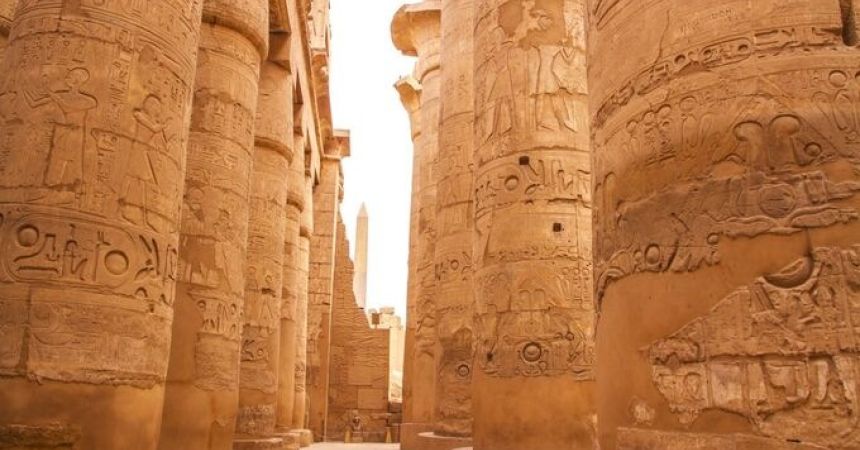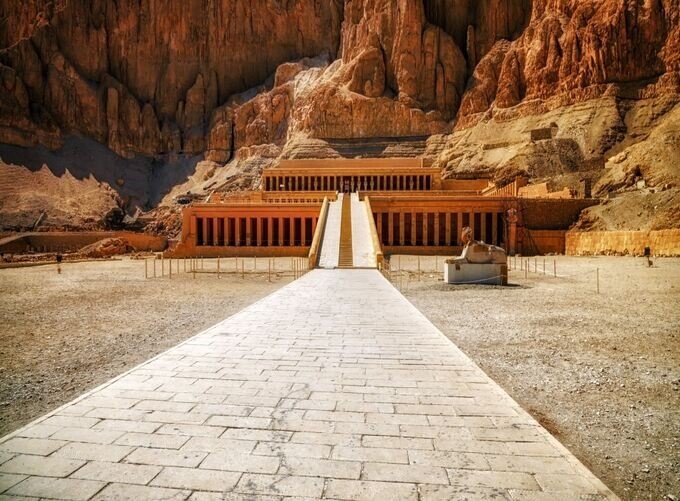
Egypt’s Temples and Tombs: Must-See Sites
Egypt, a land steeped in history, is renowned for its ancient temples and tombs that provide a glimpse into the civilization that flourished along the Nile River Cruise for thousands of years. These architectural wonders, built by the pharaohs and dedicated to gods and the afterlife, are among the most significant legacies of ancient Egypt. This complete guide will take you through the must-visit temples and tombs, offering insights into their historical significance, architectural marvels, and practical tips for your exploration.
Introduction to Ancient Egyptian Temples and Tombs
The ancient Egyptians believed in a complex afterlife and a pantheon of gods, which influenced their architecture. Temples were built as places of worship and to honor the gods, while tombs served as final resting places for pharaohs and elites, equipped for the afterlife. Understanding the historical and cultural context of these structures enhances the experience of visiting them.
Historical Context
- Pharaonic Rule: Ancient Egypt was ruled by a series of pharaohs who were considered divine. Temples were often built to honor these rulers and their gods.
- The Afterlife: The Egyptians believed in an afterlife where the soul would be judged. Tombs were designed to ensure a safe passage and a comfortable existence after death.
-
The Pyramids of Giza
Overview
The Pyramids of Giza are among the most iconic structures in the world and serve as a testament to ancient Egyptian engineering. The Great Pyramid, built for Pharaoh Khufu, is the largest and the only surviving wonder of the Seven Wonders of the Ancient World.
Key Highlights
- The Great Pyramid of Khufu: Standing at 481 feet, it was originally covered in smooth white limestone casing stones, reflecting the sun’s light.
- The Pyramid of Khafre: Slightly smaller than Khufu's, it still retains some of its original casing stones at the top.
- The Pyramid of Menkaure: The smallest of the three, it stands at 213 feet.
Tips for Visiting
- Best Time to Visit: Early morning or late afternoon to avoid crowds and heat.
- Guided Tours in Egypt: Consider hiring a guide to enhance your understanding of the history and significance of the pyramids.
-
Karnak Temple
Overview
The Karnak Temple Complex in Luxor is one of the largest religious complexes in the world, dedicated primarily to the god Amun-Ra. It spans over 2,000 acres and features numerous temples, chapels, and obelisks.
Key Highlights
- Hypostyle Hall: This vast hall features 134 massive columns, some reaching 33 feet in height. The intricate hieroglyphs depict various religious and historical scenes.
- The Sacred Lake: A serene body of water used for purification rituals.
Tips for Visiting
- Early Morning Visit: Arriving early allows you to explore the temple before the crowds.
- Light and Sound Show: Don’t miss the evening sound and light show that narrates the history of Karnak.
-
Luxor Temple
Overview
Located on the east bank of the Nile, Visit Luxor Temple was built to honor the Theban triad of Amun, Mut, and Khonsu. It is an impressive structure that showcases ancient Egyptian architecture.
Key Highlights
- Colonnade of Ramses II: The entrance features six massive statues of Ramses II and a series of towering columns.
- Sanctuary of Amun: The inner sanctuary is a significant religious site.
Tips for Visiting
- Visit at Sunset: The temple is beautifully illuminated at night, providing a magical atmosphere.
- Photography: Bring a camera to capture the temple's stunning architecture and nighttime ambiance.
-
The Valley of the Kings
Overview
The Valley of the Kings, located on the west bank of Luxor, is the burial site of many pharaohs of the New Kingdom. This UNESCO World Heritage site is famous for its elaborate tombs decorated with intricate hieroglyphs and paintings.
Key Highlights
- Tomb of Tutankhamun: Discovered in 1922 by Howard Carter, this tomb is famous for its treasures, including the gold mask of the young pharaoh.
- Tomb of Ramses VI: Notable for its elaborate decorations and inscriptions, offering insight into the burial practices of the time.
Tips for Visiting
- Plan Your Visit: Allocate at least half a day to explore several tombs. Some tombs may require an additional ticket.
- Stay Hydrated: The valley can be quite hot, so carry water with you.
-
Temple of Hatshepsut
Overview
The Temple of Hatshepsut is a mortuary temple dedicated to Pharaoh Hatshepsut, one of the few female pharaohs in ancient Egypt. The temple is architecturally unique, built into the cliffs of Deir el-Bahari.
Key Highlights
- Terraced Structure: The three-tiered design blends harmoniously with the surrounding cliffs.
- Bas Reliefs: The walls depict the story of Hatshepsut's divine birth and her trading expedition to Punt.
Tips for Visiting
- Combine with the Valley of the Kings: Visit Hatshepsut’s temple on the same day as the Valley of the Kings for an efficient itinerary.
- Guided Tour: A guided tour can provide valuable insights into Hatshepsut’s reign and the temple’s significance.
-
Abu Simbel Temples
Overview
The Abu Simbel Temples, built by Ramses II, are located near the southern border of Egypt. The temples were relocated in the 1960s to avoid being submerged by Lake Nasser.
Key Highlights
- Great Temple of Ramses II: Four colossal statues of Ramses II dominate the façade, while the interior features exquisite carvings and reliefs.
- Temple of Hathor: Dedicated to Ramses’ wife, Nefertari, this temple is adorned with beautiful reliefs depicting the queen.
Tips for Visiting
- Plan a Day Trip: Most visitors take a day trip from Aswan; early morning departures are recommended.
- Guided Tours: Consider a guided tour to learn about the history and relocation of the temples.

-
Temple of Edfu
Overview
The Temple of Edfu, dedicated to the god Horus, is one of the best-preserved temples in Egypt. It is located between Luxor and Aswan and is known for its impressive architecture.
Key Highlights
- Massive Pylon: The temple features a grand entrance with a monumental pylon decorated with reliefs depicting the battle between Horus and Seth.
- Sanctuary: The sanctuary houses the sacred boat of Horus, used in religious ceremonies.
Tips for Visiting
- Visit by Felucca: Arrive at the temple by taking a felucca (traditional sailing boat) along the Nile for a unique experience.
- Explore the Surroundings: Spend some time exploring the nearby town of Edfu for a taste of local culture.
-
Temple of Kom Ombo
Overview
The Temple of Kom Ombo is unique due to its dual design, dedicated to two gods: Sobek, the crocodile god, and Horus, the falcon-headed god. The temple is situated on the banks of the Nile, providing a scenic backdrop.
Key Highlights
- Symmetrical Design: The temple features two identical halves, each dedicated to a different deity.
- Crocodile Mummies: Visit the nearby museum showcasing mummified crocodiles, significant to the worship of Sobek.
Tips for Visiting
- Sunset Views: Arrive in the late afternoon to witness a stunning sunset over the Nile.
- Local Vendors: Explore the local market near the temple for unique souvenirs.
-
The Temple of Seti I
Overview
Located in Abydos, the Temple of Seti I is one of the most important temples in ancient Egypt, dedicated to Osiris, the god of the afterlife. The temple is renowned for its intricate reliefs and significant archaeological finds.
Key Highlights
- Osirion: A sacred area dedicated to Osiris, believed to be the burial place of the god.
- Historical Reliefs: The walls of the temple feature beautifully preserved reliefs, including the famous King List, depicting the names of pharaohs.
Tips for Visiting
- Off the Beaten Path: Abydos is less crowded than other sites, offering a more tranquil experience.
- Photography: Capture the intricate details of the reliefs, but be mindful of lighting conditions.
-
The Tombs of the Nobles
Overview
The Tombs of the Nobles in Luxor are lesser-known but offer a fascinating glimpse into the lives of ancient Egyptian elites. The tombs are adorned with colorful frescoes depicting daily life and funerary rituals.
Key Highlights
- Tomb of Rekhmire: Known for its vivid depictions of daily life, this tomb provides insight into the lives of nobles during the New Kingdom.
- Tomb of Sennefer: Famous for its stunning scenes of wine production and lush gardens.
Tips for Visiting
- Less Crowded: Visiting these tombs allows for a more intimate experience compared to the more popular sites.
- Guided Tour Recommended: A guide can help interpret the scenes depicted in the tombs.
Practical Tips for Exploring Egypt’s Temples and Tombs
Best Time to Visit Egypt
- Optimal Seasons: The best time to visit Egypt is during the cooler months, from October to April, when temperatures are more comfortable for exploring outdoor sites.
Dress Code
- Respectful Attire: Dress modestly, especially when visiting religious sites. Women should consider wearing long skirts or dresses, while men should avoid shorts.
Travel Logistics
- Transportation: Consider using domestic flights for long distances (Cairo to Luxor or Aswan). For local travel, taxis, and organized tours are widely available.
- Entrance Fees: Most temples and tombs require an entrance fee, so budget accordingly. Some sites offer combined tickets for multiple attractions.
Cultural Etiquette
- Respect Local Customs: Be aware of cultural norms and practices. Always ask for permission before taking photographs of people.
- Bargaining: If you shop at local markets, be prepared to haggle over prices.
Discover Ancient Egyptian Pyramids and Temples
Exploring Egypt’s temples and tombs is a journey through time, offering a unique glimpse into the civilization that shaped human history. Each site tells a story, reflecting the religious beliefs, architectural genius, and cultural richness of ancient Egypt. As you embark on this adventure, take the time to immerse yourself in the history and significance of these incredible structures, ensuring a deeper appreciation for the wonders of this ancient land. Whether you’re standing before the majestic pyramids or wandering through the intricate halls of ancient temples, Egypt’s past will undoubtedly leave an indelible mark on your heart and soul.



